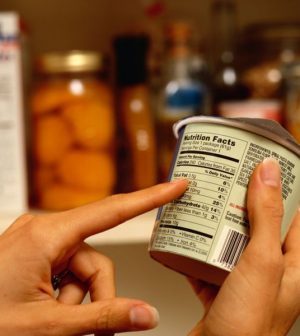- Navigating Your Midlife Crisis: Embracing New Possibilities
- City Raccoons Showing Signs of Domestication
- Mapping the Exposome: Science Broadens Focus to Environmental Disease Triggers
- One Week Less on Social Media Linked to Better Mental Health
- Your Brain Changes in Stages as You Age, Study Finds
- Some Suicide Victims Show No Typical Warning Signs, Study Finds
- ByHeart Formula Faces Lawsuits After Babies Sickened With Botulism
- Switch to Vegan Diet Could Cut Your Greenhouse Gas Emissions in Half
- Regular Bedtime Does Wonders for Blood Pressure
- Dining Alone Could Mean Worse Nutrition for Seniors
Counting Your Way to Weight Loss

The concept of counting calories to lose weight is based on a pound of fat being equal to 3,500 calories, so that cutting 500 calories a day means you should lose about one pound a week.
That’s not always true, however.
Many diets limit daily calories to 1,200, but this may not be the magic number for everyone. It could be too low for a very active man or too high for a sedentary woman to net a pound-a-week loss.
To determine the right calorie cap for you, it helps to know how many calories you’re currently eating. That’s your baseline number. Many people underestimate how much they eat each day, and dieters tend to underestimate this even more.
To find your baseline number, keep a food journal for a week, recording the calories in everything you eat and drink. This will also make you more aware of just how much you’re taking in. Calculate your daily average to get your baseline number.
For a faster estimate, use an online “daily calorie needs” calculator. You’ll type in your age, sex, height, weight and activity level, and the site will do the calculations. You can also see how many calories you’ll be able to eat once you reach your ideal weight. To start your diet, cut 500 calories a day from your baseline.
As you lose weight, you’ll need to progressively decrease calories to continue losing at the same rate because your baseline number gets a little smaller with every pound lost.
More information
The U.S. Department of Agriculture has more on calculating calories.
Source: HealthDay
Copyright © 2025 HealthDay. All rights reserved.










